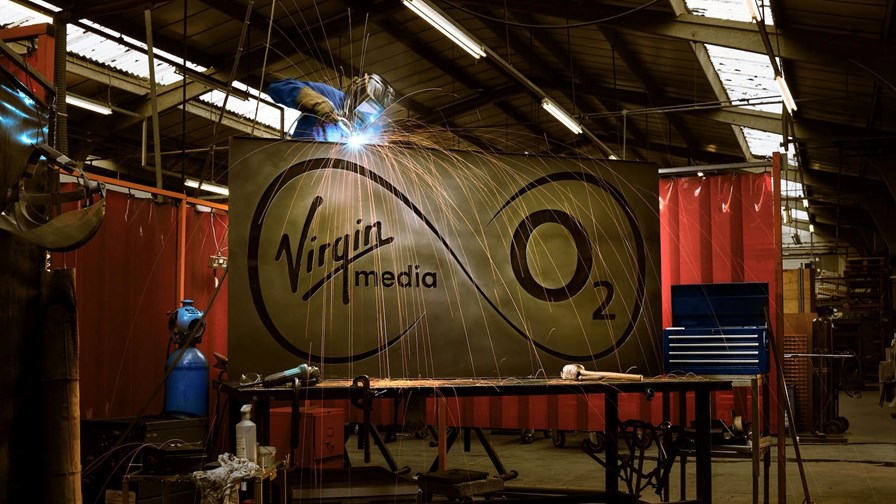
- Merger of UK operators Virgin Media and O2 has been completed
- Newly-formed company plays it safe by calling itself Virgin Media O2
- Merged business has annual revenues of £11 billion and more than 45 million connections
- Targets £10 billion in investments during next five years
- But it needs to be bold and put customers first to fulfil its potential
More than a year after it was first announced, the merger of cable operator Virgin Media and mobile operator O2 has been completed, forming a combined company with more than 45 million connections, annual revenues of more than £11 billion and 18,000 staff.
Sensibly, the company, forged by its respective parents Liberty Global and Telefónica, has not currently opted for a trendy new name (you know the type… no vowels, potentially a link to an ancient language) and is simply calling the new company Virgin Media O2.
In total it has more than 45 million connections (based on the numbers reported for the end of the first quarter of this year): 5.66 million cable fixed line customers from Virgin Media; 3.4 million Virgin Mobile customers (whose service is provided currently by Vodafone UK); and O2’s 36.9 million connections, which comprises 27.56 million retail customers and 9.35 million wholesale connections used by MVNO partners such as giffgaff, Tesco Mobile, Sky Mobile and Lycamobile.
It’s worth noting that of O2’s 27.56 million retail connections, only 12.35 million are contract mobile customers, while just over 8 million are pre-pay, 6.78 million are IoT connections (up 22% year-on-year), 321,000 are fixed line telephony customers and 29,300 fixed broadband customers (so the headline numbers might not be quite as impressive as they first seem).
So what next?
Well, the company, in this statement, restated its pledge to invest £10 billion during the next five years, focusing on taking its gigabit broadband and 5G network connectivity to as many places as possible. The gigabit broadband will come in part from Virgin Media’s ongoing investments in the latest cable broadband technology (DOCSIS 3.1) and the fibre being rolled out as part of Project Lightning, which has already passed 2.6 million premises.
Back in October last year, the then two separate operations jointly said they would ensure that 16 million homes would have access to Gigabit broadband within one year of the deal closing (so that date is now set at 1 June 2022) and then take that capability to a further 7 million premises, putting the new total at 23 million. That’s a few million short of the new target set by Openreach, BT’s quasi-independent wholesale access network unit, which aims to take fibre to 25 million premises by the end of 2026.
That October 2020 announcement also include a pledge to create 4,000 new jobs and up to 1,000 apprenticeships, let’s not forget…
The success of Virgin Media O2 will depend on how wisely it executes on those pledges and how it can expand them: How can the new company reach even more premises with high-speed fixed broadband for consumers and business users? There are plenty of companies now investing in new fibre builds around the UK – becoming an anchor tenant on some of those builds outside its existing service areas would seem like a good way to extend reach and get some very preferential terms.
And how can it build out, densify and expand its 5G network? O2 has been checking out Open RAN’s potential for almost two years now – could that result in a radical new way to provide even better services at lower costs to more customers?
Critically, it’s success is also dependent on whether it can sort out the challenge of having a simple customer proposition for consumers and business users alike, because right now it has too many services, too many options and too many modes of engagement.
Virgin Media O2 has the opportunity to do two things from the get-go: Grow its underlying network architecture and technology systems in a future-proof way (which includes using shared assets, public cloud platforms and cutting-edge technologies) and communicating in a way that is not confusing to the customer. If it can get those two things right it will have an advantage over BT/EE, Vodafone and Three, but it will be a very tough task – mergers are often complicated affairs from which rivals can benefit, especially in the short-term.
Personally, as a customer of both companies, I hope the unified company can take the best of both, discard the worst (look to the back office and digital platforms….), push some boundaries ], be bold and make the customers happy… that’s always a route to success but often not given enough attention by CSPs.
- Ray Le Maistre, Editorial Director, TelecomTV
Email Newsletters
Sign up to receive TelecomTV's top news and videos, plus exclusive subscriber-only content direct to your inbox.




